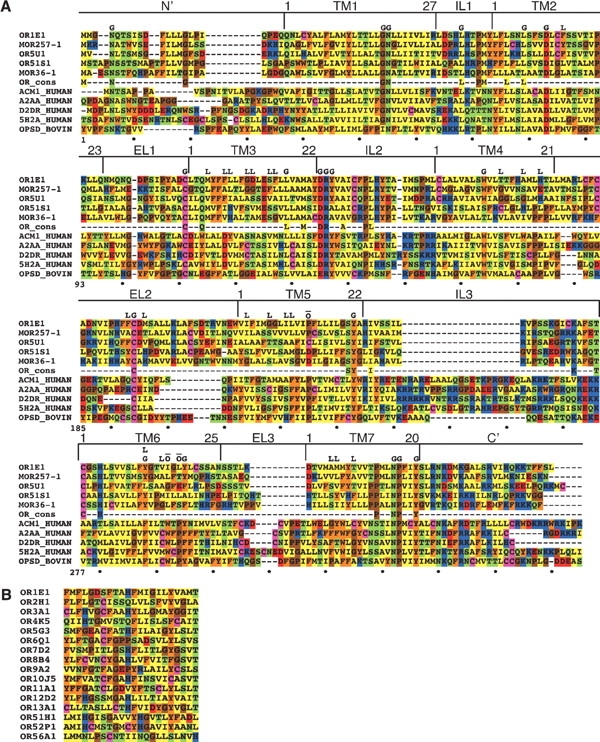Figure 2.

(A) Multiple alignment of OR proteins (upper rows) and non-OR GPCRs (lower rows). Five typical OR sequences and five non-OR GPCRs (lower rows) are shown. The row marked “OR cons” contains positions, which are 90% conserved in both class I and class II intact mouse ORs. The OR sequences shown are OR1E1 (human), MOR257-1 (mouse, AY073101), OR5U1 (human), OR51S1 (human), and MOR36-1 (mouse, AY073738). The other GPCR sequences are muscarinic M1 acetylcholine receptor (human, P11229), α2A adrenergic receptor (human, P08913), D2 dopamine receptor (human, P14416), 5-hydroxytryptamine 2A receptor (human, P28223), and rhodopsin (bovine, P02699). The N and C termini of the sequences have been partially truncated and the central part of the third intracellular loop has been removed for the muscarinic, adrenergic, dopamine, and serotonin receptors. The boundaries of the seven TM segments and the intracellular and extracellular loops are shown above the sequences. The following positions are marked above the sequences: G, conserved positions among all GPCRs (Oliveira et al. 1993), which are also conserved in ORs (over 60% conservation in intact mouse ORs); Ō, GPCR-conserved positions, which do not appear (TM6) or display very low conservation (TM5) in ORs; L, the proposed OR binding site positions (as defined in Table 1). The total alignment positions numbering is displayed below the sequences and a TM numbering is given for the individual helices. The alignment shown is a subset of a larger alignment of 205 sequences—112 OR sequences and 93 non-OR GPCR sequences. (B) Alignment of the putative binding site residues (corresponding to the list in Table 1) of human ORs from different families.
